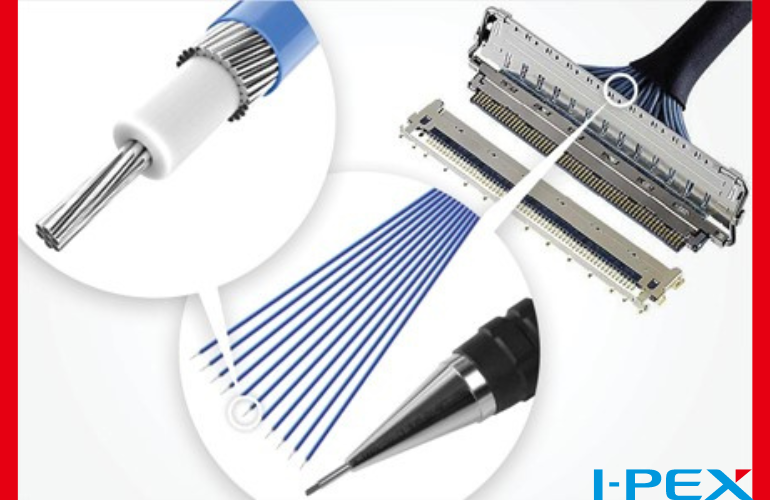
By Kevin Chen, Connector Marketing, I-PEX
What is Micro-Coaxial Cable?
The size of the center conductor used in the coaxial cable is described using an AWG (American Wire Gauge) Standard. The larger the AWG number, the smaller the size of the center conductor. In general, coaxial cables with an outer cable diameter (O.D.) of ~1 mm or less are referred to as “micro-coaxial” cables. Micro-coaxial cable is widely used for signal transmission between module boards inside devices such as PCs, tablets, and smartphones, as well as precision instruments used for medical, industrial, automotive, and aviation.
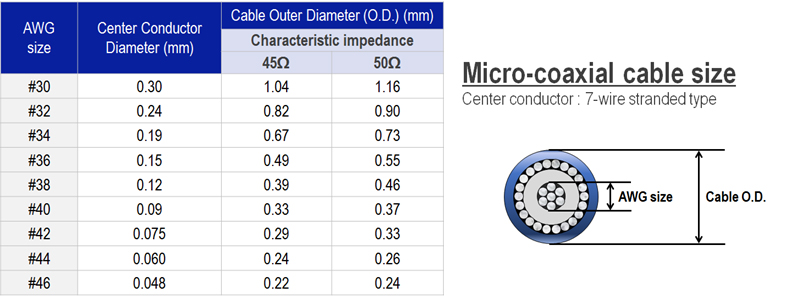
What are Micro-Coaxial Connectors?
Micro-coaxial connectors are mainly used to connect digital signals between module boards by the differential transmission method using micro-coaxial cables. To perform appropriate signal transmission, the center conductor, which transmits the signal, needs to be connected to the signal circuit on the board via the contacts of the connector. The outer conductor of the cable needs to be electrically connected on the board via metal parts of the connector referred to as the shell. The electrical connection of the outer conductor to board through the connector shell is called “grounding.”
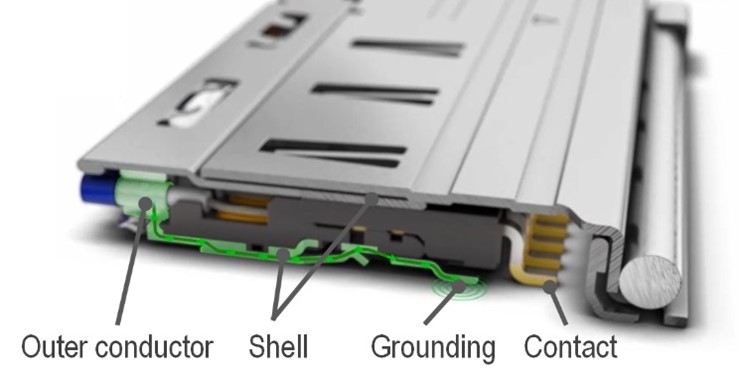
The cable outer conductors are electrically connected to the board via connector by terminating the cable outer conductors to the connector shell to obtain optimal ground characteristics.

Features and Applications of Micro-Coaxial Cables
As high-speed Internet improves and the usage of large-capacity memory devices increases, high-quality images and videos can be enjoyed more easily on consumer products such as PCs, tablets and smartphones. The amount of information that needs to be processed on the device has dramatically increased and the signal speed (transmission standard) in the device has been getting faster and faster.

Cables and FPC/FFC are mainly used for jumper connections when transferring signals and power between module boards in devices. To some extent, the types of cables and FPC/FFC are determined by the signal speed (signal transmission standard) and transmission distance. In general, micro-coaxial cables are considered suitable for high-speed or long-distance signal transmission.

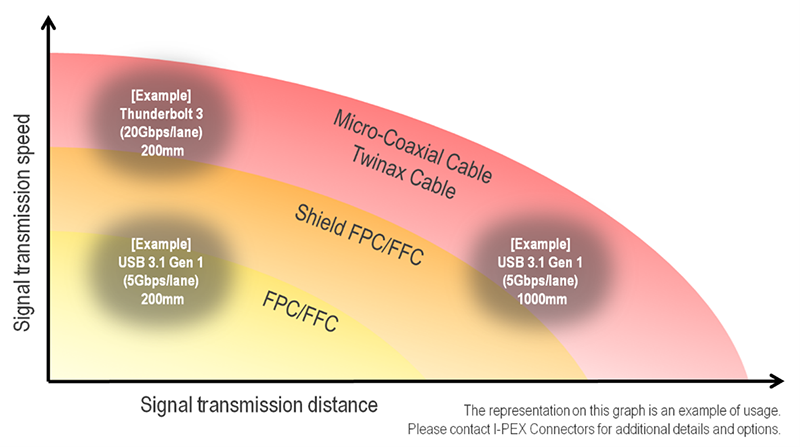
Signal Transmission Advantages of Micro-Coaxial Cables
Signal transmission characteristics are affected by a variety of parameters such as characteristic impedance, insertion loss, return loss, and crosstalk. Below are some of the main reasons why micro-coaxial cables are generally considered to have signal transmission advantages when a high-speed signal is transmitted.
- Return loss reduction: The center conductor, dielectric, and outer conductor in micro-coaxial cables are suitable for matching and are stabilized at specific impedance. Matched and stabilized impedance creates a low return loss.
- Insertion loss reduction: A micro-coaxial cable can secure a larger cross-sectional area of the center conductor compared to FPC/FFC when matching to specific impedance, which minimizes the reduction of insertion loss.
- High shielding performance: The outer conductor works as an electromagnetic shield so the electrical signal transmitted on the center conductor is less susceptible to electromagnetic waves (electromagnetic noise) from the outside. In addition, the shielding effect of the outer conductor also helps to reduce crosstalk between signal lines.
Mechanical Advantages of Micro-Coaxial Cables
Often, micro-coaxial cable is used because it has a higher degree of flexibility compared to shielded FPC/FFC and it can stabilize electrical characteristics, even if it is bent.
Micro-coaxial cables are suitable for devices with hinges that require the cables to be moved and routed within the device, such as hinges on notebook PCs and rotating cameras on drones. With the rise in the number of applications now including high-resolution cameras and panels along with higher signal transfer speeds, micro-coaxial cables that combine high-speed signal characteristics and mechanical advantages are a preferred solution.

Features of I-PEX Micro-Coaxial Connectors
Micro-coaxial cable connectors are ideal for connecting displays, camera modules, storage devices and other applications where cables need to route through narrow spaces/hinges. I-PEX® CABLINE® connectors easily handle high data rates, support power delivery, and have the option of high-performance EMC shielding (ZenShield® feature).
Watch Video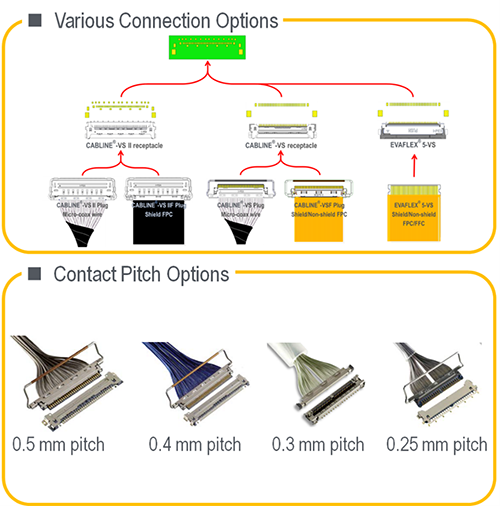

I-PEX Shielded Connectors
If electromagnetic noise is added from the outside, unnecessary current may be induced to the circuits in the devices causing a malfunction or damage to high-performance electronic components, which may also lead to electronic device breakage. In addition, in electronic devices with wireless communication functions (e.g., notebook PCs, tablets, mobile phones), electromagnetic waves generated within the devices can add to the wireless communication circuit noise, which could reduce antenna reception performance.
In such cases, the measures against electromagnetic noise inside the device are implemented by incorporating electromagnetic noise filter components into the circuit and/or physically blocking the electromagnetic noise by adding a metal shield that covers the components.
I-PEX has developed a high-performance EMC connector series (ZenShield®) that solves electromagnetic noise in the connector by using an appropriate grounding structure and cover, which includes the mounting position of the signal contact tails with metal shields. This solution is widely adopted by customers to prevent electromagnetic interference, especially in high-performance devices equipped with wireless communication functions such as Wi-Fi, GPS, and LTE.

Have questions or wish to request samples? Contact us.
Sponsored content by I-PEX


Leave a Reply
You must be logged in to post a comment.